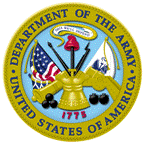Authors
José A. Stoute, US Army Medical Research Unit and the Kenya Medical Research Institute, Nairobi, KenyaFollow
Joash Gombe, US Army Medical Research Unit and the Kenya Medical Research Institute, Nairobi, Kenya
Mark R. Withers, US Army Medical Research Unit and the Kenya Medical Research Institute, Nairobi, Kenya
Joram Siangla, US Army Medical Research Unit and the Kenya Medical Research Institute, Nairobi, Kenya
Denise McKinney, US Army Medical Research Unit and the Kenya Medical Research Institute, Nairobi, Kenya
Melanie Onyango, US Army Medical Research Unit and the Kenya Medical Research Institute, Nairobi, Kenya
James F. Cummings, Division of Communicable Diseases and Immunology, Walter Reed Army Institute of Research, Silver Spring, MD, USA d Statistics Collaborative Inc., Washington, DC, USA
Jessica Milman, The Malaria Vaccine Initiative, PATH, Bethesda, MD, USA
Kathryn Tucker, Statistics Collaborative Inc., Washington, DC, USA
Lorraine Soisson, Malaria Vaccine Development Program, US Agency for International Development, Washington, DC, USA
V. Ann Stewart, Division of Communicable Diseases and Immunology, Walter Reed Army Institute of Research, Silver Spring, MD, USA
Jeffrey A. Lyon, Division of Communicable Diseases and Immunology, Walter Reed Army Institute of Research, Silver Spring, MD, USA
Evelina Angov, Division of Communicable Diseases and Immunology, Walter Reed Army Institute of Research, Silver Spring, MD, USA
Amanda Leach, GlaxoSmithKline Biologicals s.a., Rixensart, Belgium
Joe Cohen, GlaxoSmithKline Biologicals s.a., Rixensart, Belgium
Kent E. Kester, Division of Communicable Diseases and Immunology, Walter Reed Army Institute of Research, Silver Spring, MD, USA
Christian F. Ockenhouse, Division of Communicable Diseases and Immunology, Walter Reed Army Institute of Research, Silver Spring, MD, USA
Carolyn A. Holland, Division of Communicable Diseases and Immunology, Walter Reed Army Institute of Research, Silver Spring, MD, USA
Carter L. Diggs, Malaria Vaccine Development Program, US Agency for International Development, Washington, DC, USA
Janet Wittes, Statistics Collaborative Inc., Washington, DC, USA
D. Gray Heppner, Jr., Division of Communicable Diseases and Immunology, Walter Reed Army Institute of Research, Silver Spring, MD, USA
Date of this Version
2007
Citation
Vaccine 25 (2007) 176–184
Abstract
We report the first trial of candidate malaria vaccine antigen FMP1, a 42 kDa fragment from the C-terminus of merozoite surface protein-1 (MSP-1) from the 3D7 strain of Plasmodium falciparum, in an endemic area. Forty adult male and female residents of western Kenya were enrolled to receive 3 doses of either FMP1/AS02A or Imovax® rabies vaccine by intra-deltoid injection on a 0, 1, 2 month schedule. Thirty-seven volunteers received all three immunizations and 38 completed the 12-month evaluation period. Slightly more recipients of the FMP1/AS02A vaccine experienced any instance of pain at 24 h post-immunization than in the Imovax® group (95% versus 65%), but otherwise the two vaccines were equally safe and well-tolerated. Baseline antibody levels were high in both groups and were boosted in the FMP1/AS02A group. Longitudinal models revealed a highly significant difference between groups for both the average post-baseline antibody responses to MSP-142 (F1,335 = 13.16; P < 0.001) and the Day 90 responses to MSP-142 (F1,335 = 16.69; P < 0.001). The FMP1/AS02A vaccine is safe and immunogenic in adults and should progress to safety testing in children at greatest risk of malaria.



Comments
U.S. Government Work